inside chicken coop layout
Get tips on the best inside chicken coop layout so you can create a home for your flock that allows them to stay warm, safe, and lay farm fresh eggs every day.
Raising chickens is one of those homesteading tasks that is both fun and rewarding. Yes, there are chores you need to do daily, weekly, and monthly, but with an organized coop layout, you can do those quickly and easily.
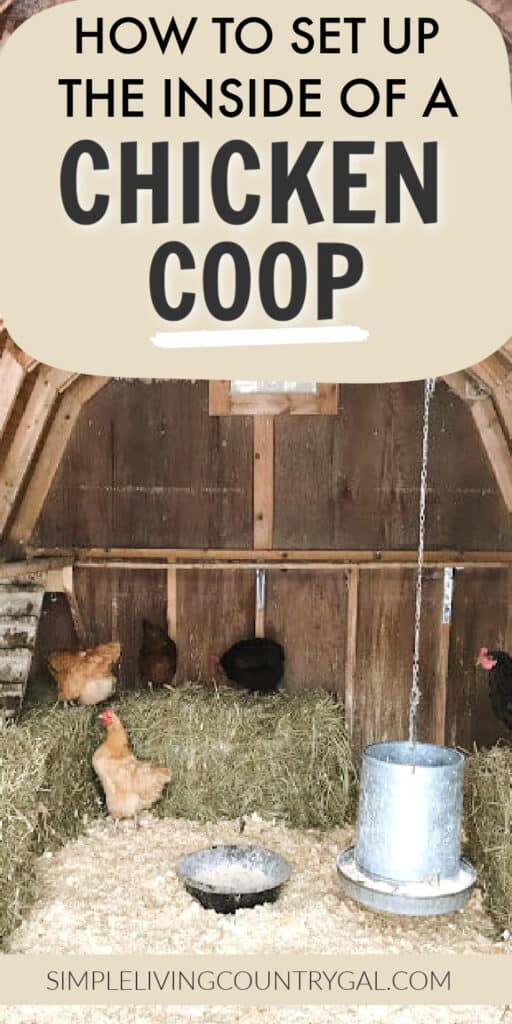
Creating the perfect layout for your chicken coop is essential for keeping your flock happy and healthy. Not only does it provide a safe and comfortable space for them to live, but it also makes tasks such as collecting eggs and cleaning their living area much more efficient. Knowing the purpose of each part of a coop will help you to decide the best spot to locate it.
Over the years we have had quite a few different layouts in our coop and it took a bit to find the best setup for us. Remember, the layout you choose is for your chickens yes but it is also for you as well. You want to have things easy to take care of. This is especially important if you are raising chickens in midlife.
Have things arrange so you can collect eggs easily, clean things out without hurting your back, and limit how often you need to go out the coop allowing your hens to be more self-sufficient.
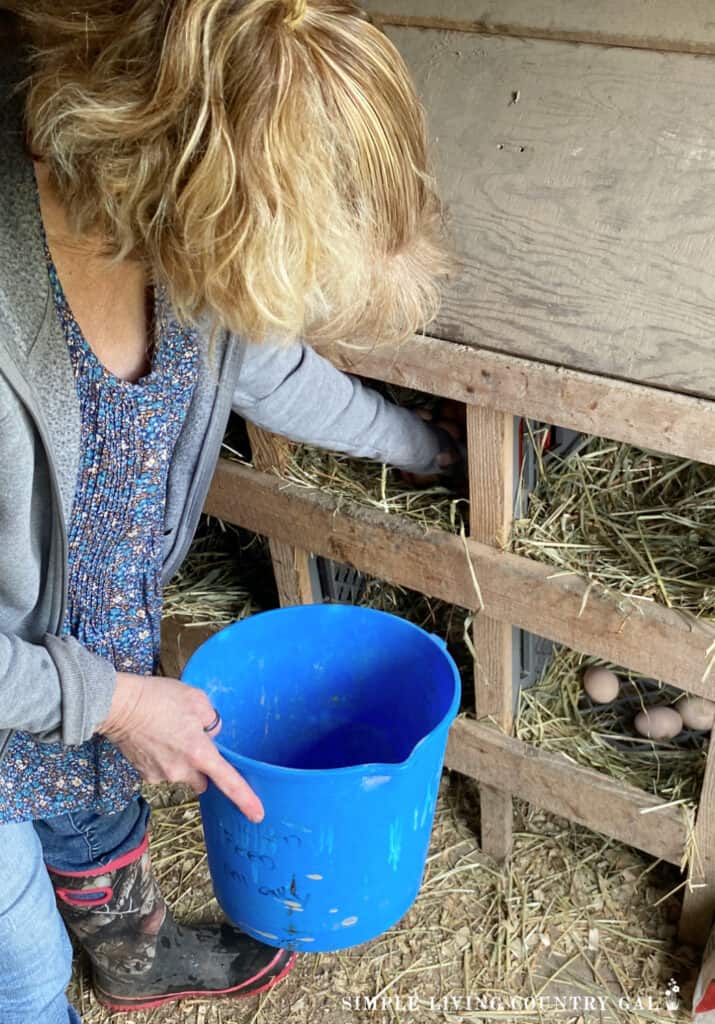
How much room do you need in a coop?
One important aspect to keep in mind when planning your inside chicken coop layout is the size and space available. It’s recommended to have at least 4 square feet of floor space for each chicken in the coop, with an additional 8-10 square feet of outdoor space for each.
This will ensure everyone has enough room to move around and spread their wings without feeling cramped. Also, keep in mind room for growth if you plan to add more chickens later on.
What needs to be inside a chicken coop?
There are a few key elements to have inside your chicken coop, and each part plays a role in your chicken’s care.
- Roost
- Nesting boxes
- Feeder
- Waterer
- Dust bath – optional
- Ventilation
- Insulation
- Protection
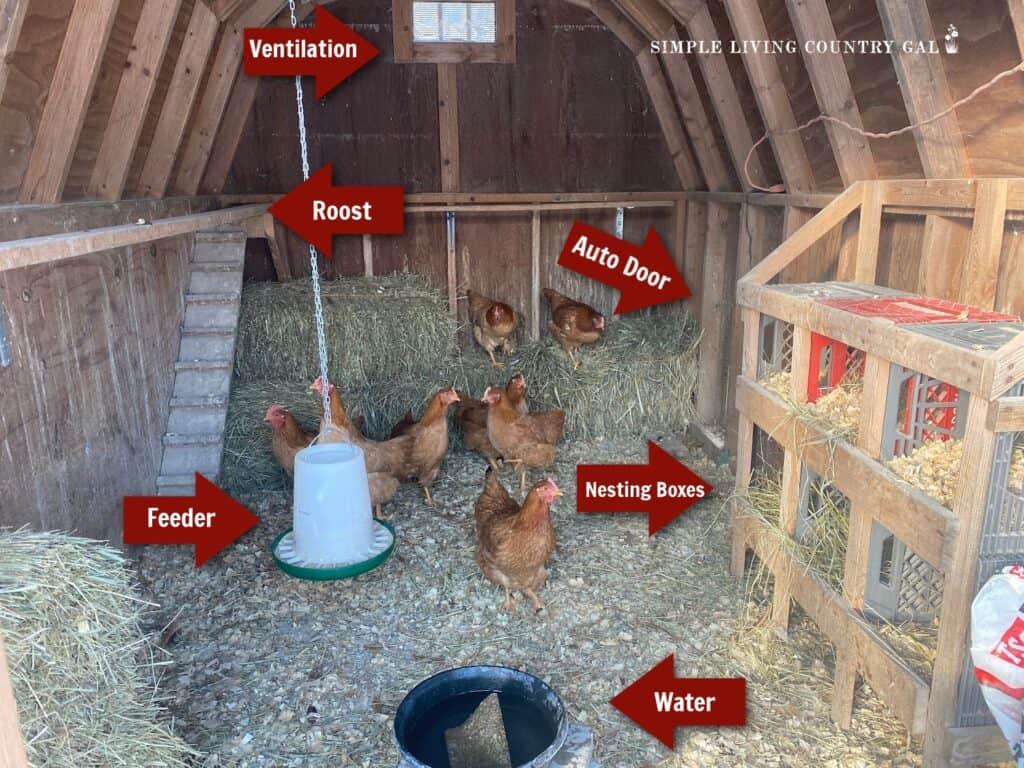
Inside Chicken Coop Layout
Once you have a shelter selected for your chicken coop you will need to set up the interior for your entire flock to utilize. This includes any roosters you may have, as well as any ducks.
Coop Resources:
- How to Make a DIY Chicken Coop
- Converting a Shed into a Chicken Coop
- Chicken Coop Ideas to Try
Roosting Area or Perches
A roost is an area where your chickens perch at night so they can sleep securely. Since chickens cannot see in the dark, they instinctively prefer to be up off the ground where they feel safe. This is where a roost comes in.
You will want to have 8-12 inches of space for each chicken. Having a space where each chicken can sleep without being crowded will help them to rest stress-free.
Location Tips –
• Put the roost in a spot of the coop that is free of drafts. This will help to keep everyone warmer in the winter months.
• Be sure you have room to clean up under the roost. Chickens poo a lot during the night, and cleaning underneath the roost each morning will keep the coop cleaner and smeller fresher.
• You can put a scrape board directly below the roost to catch droppings during the night. Each morning take this board out and scrape it clean. This will keep your coop cleaner and smelling much better for a longer time.
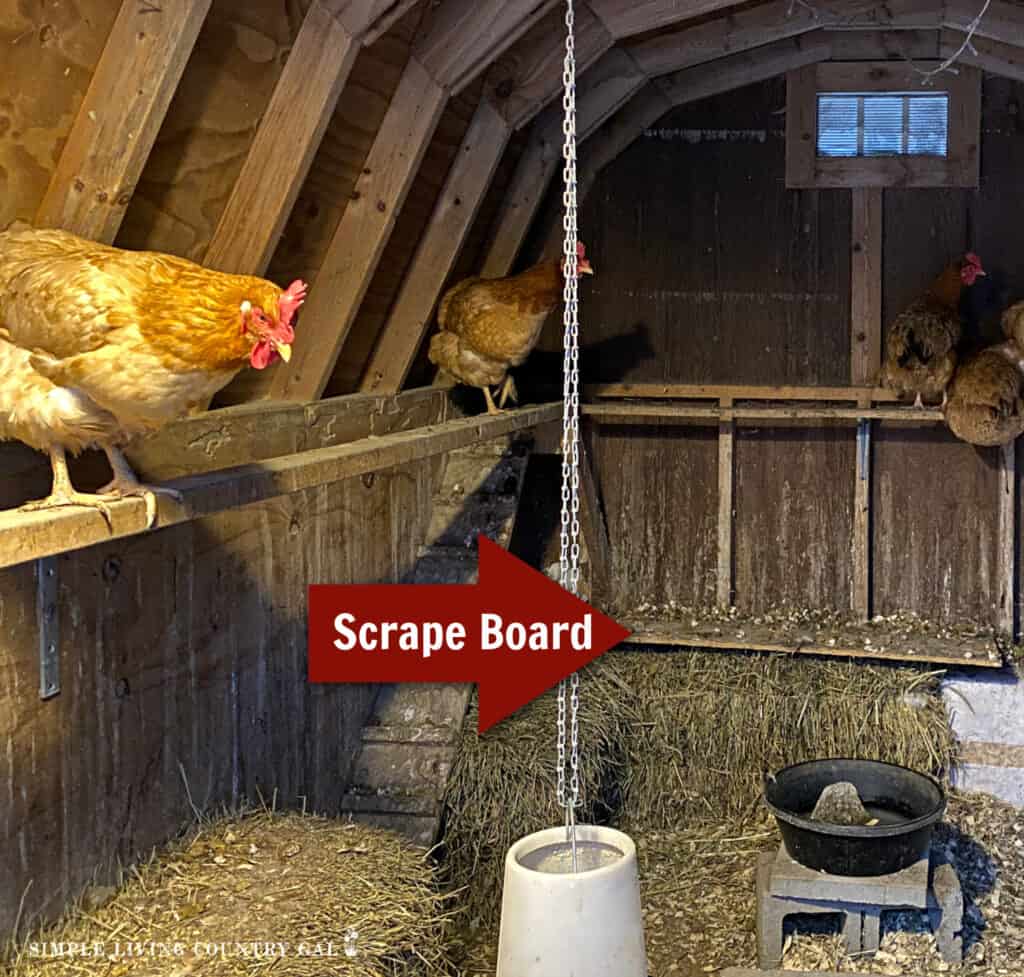
• Consider the size of your chickens before you determine how high to have the roost. Some breeds cannot fly well and will need a shorter distance to jump up onto their perch.
• I have found that chickens prefer top stand flat footed and for that reason a wider roost works best.
• A good height for a roost is about 2-3 feet off the ground or higher.
Nesting Boxes
A nesting box is an enclosed area where chickens can lay their eggs. Since hens like to lay eggs in a quiet dark place, a nesting box is the perfect solution. Many containers will work great as nesting boxes:
- Milk Crates – Read our Building a Chicken Nesting Box guide to DIY your own.
- Buckets – Turned sideways
- Wood Boxes – Homemade or you can purchase wood nesting boxes.
- Wash Tubs
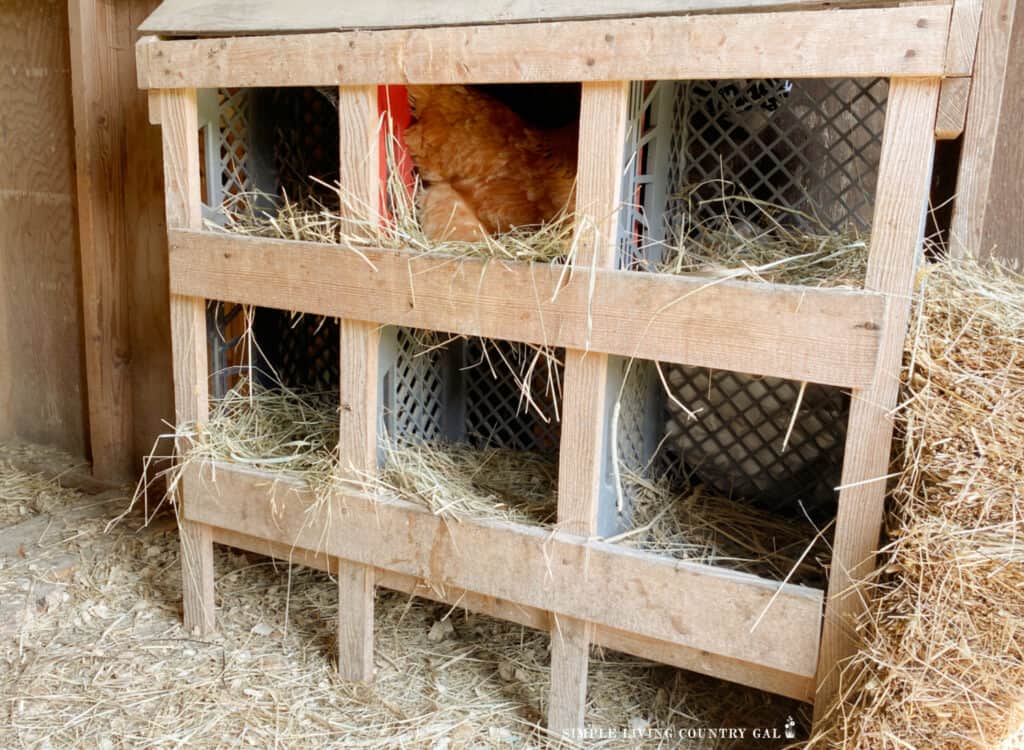
Nesting boxes also help to keep the eggs protected until you can collect them.
You will want to have one nesting box for every four birds in your flock. Even though you have enough boxes you may still find all the eggs in one box. This is normal and nothing to be alarmed at.
Location Tips
• Put the nesting boxes in a draft-free area of the coop. This will keep the eggs warm in the colder months until you can collect them.
• Keep the boxes in an area of the coop that allows you to collect the eggs easily. If you have a large flock you may need to collect eggs a few times a day, and this is something you will want to keep in mind as well.
• Keep the boxes at least 2 feet off the ground to prevent predators from getting inside.
• Line the bottom of the nesting box with clean straw or shavings, and replace it regularly to keep the eggs clean and free of bacteria.
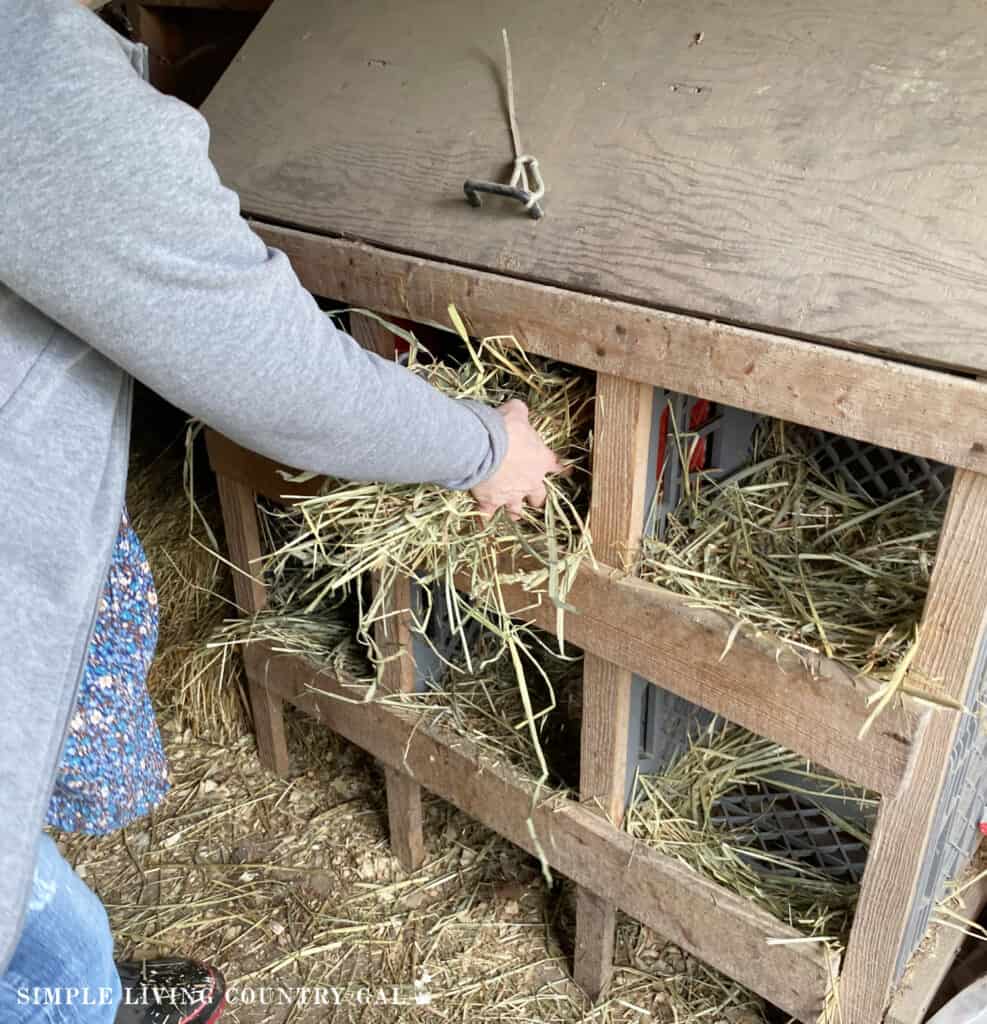
Chicken Feeder
Chickens tend to eat many times throughout the day and for that reason having an automatic feeder is helpful for both you and your flock. An automatic feeder allows you to add a large amount of feed slowly dropping more as the chickens consume it.
This can help take a daily chore and turn it into a weekly one. You will want to have 1 feeder for every 6-8 chickens to prevent fighting.
Location Tips
• Locate the feeder in a central area so there is plenty of room for everyone to eat comfortably.
• Be sure the feeder is away from the roost to keep the food free from droppings.
• Attach a long chain to a nail from the ceiling to hand the feeder. This will prevent it from tipping over as the chickens are eating from it.
• Be sure the feeder is easy for you to access so you can fill it comfortably.
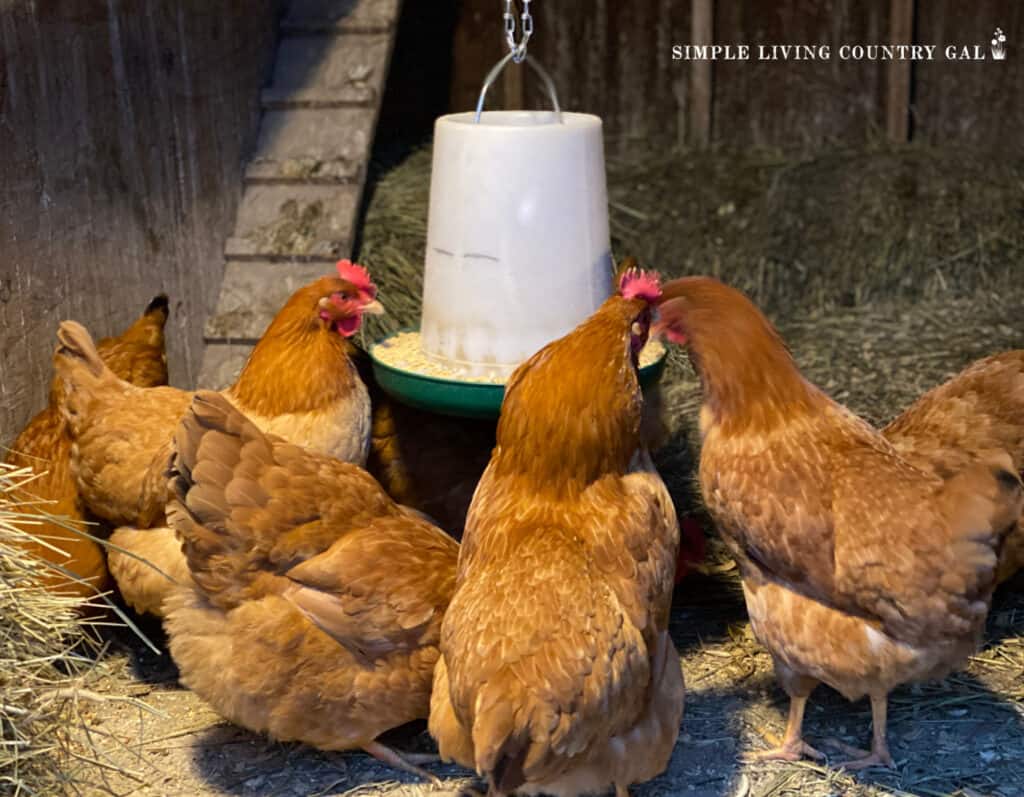
Chicken Waterer
Just like with the feeder, you will want to have access to water constantly. Hydration is the key to healthy chickens, and by always having clean, fresh water available, they will drink it more often. You can use an automatic waterer to, reduce this chore to a less frequent schedule. There are a few options out there that you can look at for your coop setup.
You will want to have one waterer for every six chickens in your flock. Also, be sure to have another waterer outside of the coop in the run area.
If you live in a colder area as we do, an automatic waterer may not be the best option. Instead, you can use a rubber bowl. Rubber allows you to more easily remove frozen water without damaging the container. You will need to change the water out daily, but that is a small price to pay for a source of water that is fresh and available. Put the bowl up on a block to help keep bedding and droppings out of the water.
Chicken Coop Waterers
RentACoop 5 Gallon Chicken Waterer – 4 Horizontal Side Mount Poultry Nipples (Corner)


Location Tips:
• Locate the waterer in a central area so there is plenty of room for everyone to drink from it without fighting.
• Be sure the waterer is away from the roost to keep it cleaner.
• If using an automatic waterer, attach a long chain to a nail from the ceiling to hang. This will prevent it from tipping over as the chickens are drinking from it.
• If using a rubber bowl, place it on a block or other platform to keep it from getting dirty.
• Place a rock inside to keep it from tipping over.
• Be sure the waterer is easy for you to access so you can fill it comfortably.
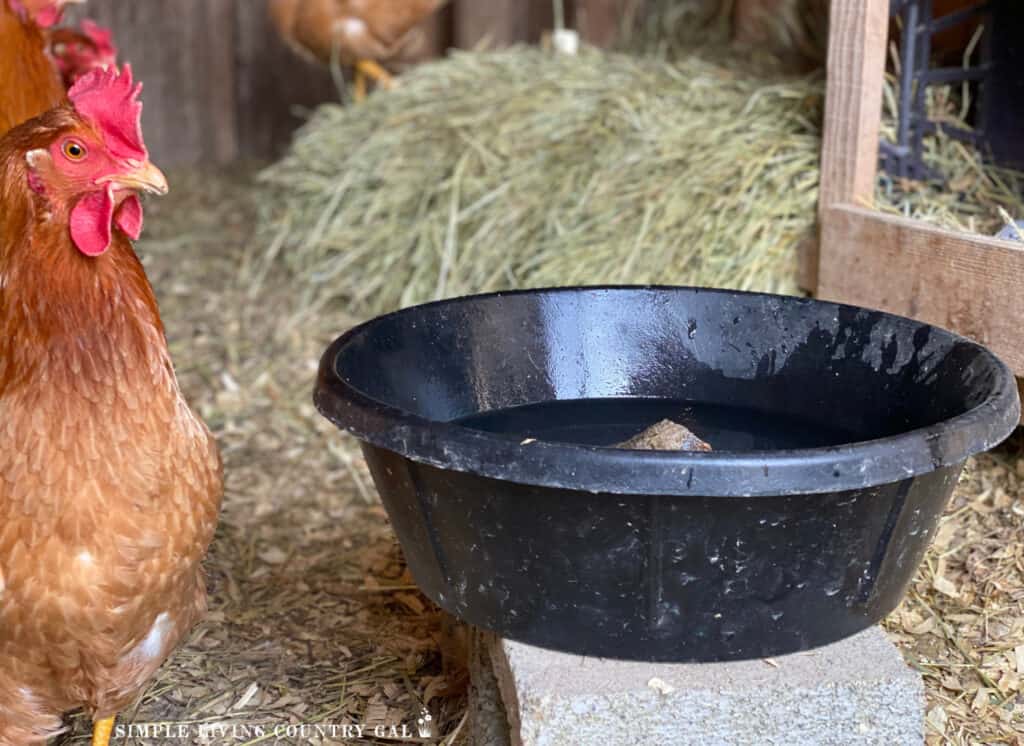
Chicken Dust Bath
A dust bath is a container of dirt and other ingredients (Get our DIY Dust Bath Recipe here) where chickens take a dry bath. This is essential for happier and healthier chickens in your flock.
You will want to have 1-2 dust bath areas for 8-10 hens. You can expect your chickens to utilize a dust bath every few days.
What is a chicken dust bath?
A dust bath is when a chicken rolls in loose ground working it through their feathers all over their body. They roll, dig, scratch, and throw up the materials so it can get all the way down to their skin. After, they will flap their wings removing the dust and any debris and pests along with it.
Dust bathing allows chickens to rid themselves of parasites, excess oil, and dead skin cells. It also helps them regulate their body temperature by removing moisture from their feathers. Additionally, the process of digging in the dirt and tossing it over their bodies stimulates blood flow and preening behaviors, which can help keep their feathers clean and healthy.
Location tips:
- Use a container to hold the materials inside of the coop. A litter box, wash tub, or old tire all work great.
- Outside the coop, you can have a few holes in the ground on the outside perimeter.
- Keep the dust bins away from the roost so the components stay cleaner.
- Put it in a corner away from drafts.
Ventilation in the Coop
Another important part of a chicken coop layout is ventilation. Fresh air in a coop will help to keep things fresher for your flock. Appropriate ventilation will encourage healthier lungs in your chickens. Remember, you want ventilation and not drafts, and yes…there is a difference.
What is the difference between ventilation and drafts in a coop?
Ventilation refers to the circulation of fresh air in and out of the coop, while drafts are uncontrolled and often cold air that comes in through cracks or openings. It’s important to have proper ventilation in a coop because it helps remove moisture, ammonia, and other harmful gases that can build up from chicken droppings. This not only keeps your chickens healthy but also helps prevent respiratory issues such as frostbite and respiratory infections.
Tips for proper ventilation:
- Install vents near the roofline for optimal air flow.
- Keep vents open year-round, even during colder months.
- Use wire mesh to cover any openings to prevent predators from entering.
- Clean out bedding regularly to reduce buildup of ammonia and moisture.
Protection from Predators
While designing your chicken coop layout, it’s important to consider protection from predators. Chickens are vulnerable animals, and there are many potential predators that can harm or kill them. Some common predators include foxes, coyotes, raccoons, hawks, and even domestic pets like dogs and cats.
Tips to protect your chickens from predators:
- Use sturdy materials and construction techniques to ensure the safety of your coop.
- Install a secure door with latches and locks to prevent easy entry for predators.
- Use hardware cloth or wire mesh with small openings to cover any openings in the coop.
- Regularly check for signs of damage or weakness in the structure of the coop.
- Keep food sources inside the coop, as these can attract predators.
- Consider installing motion-activated lights or alarms to deter predators.
Maintenance and Cleaning
Proper maintenance and cleaning of your chicken coop is crucial for the health and well-being of your chickens. A dirty and unkempt coop can lead to a buildup of bacteria, mold, pests, and other harmful substances. I am a big fan of lists and routines, and I feel they help me to “do” and not have to think things through constantly. If this sounds like you, you can purchase our Chicken Coop Guide and Record Journal. It will help you with the different components of a coop layout, as well as a list of chores that need to be done consistently for a healthier flock.
Daily Coop Maintenance:
- Check and fill the feeder
- Check and fill or change out the water
- Clean droppings under the roost
- Collect any eggs
- Replenish any materials inside nesting boxes
- Add bedding to the coop if needed
- Check the condition of your chickens and rooster
By doing these things daily, you will have a cleaner coop, a safer setup, and a healthier and happier flock of chickens.
Setting up a coop that is organized and arranged specifically for the care of your flock will ensure everyone is healthy and happy. Have all the elements in the best location so there is no fighting, stress, or conditions that may threaten the health of your chickens. How to setup the inside of your chicken coop layout so everyone thrives including you.




